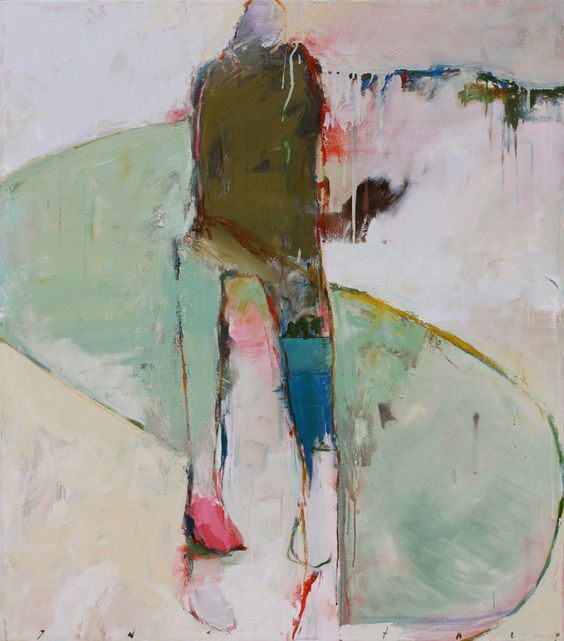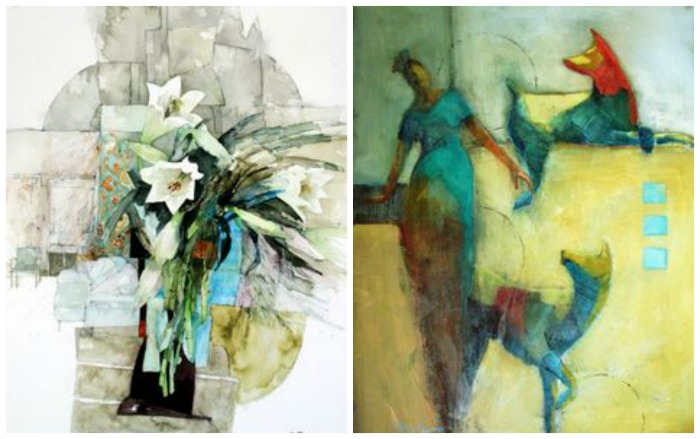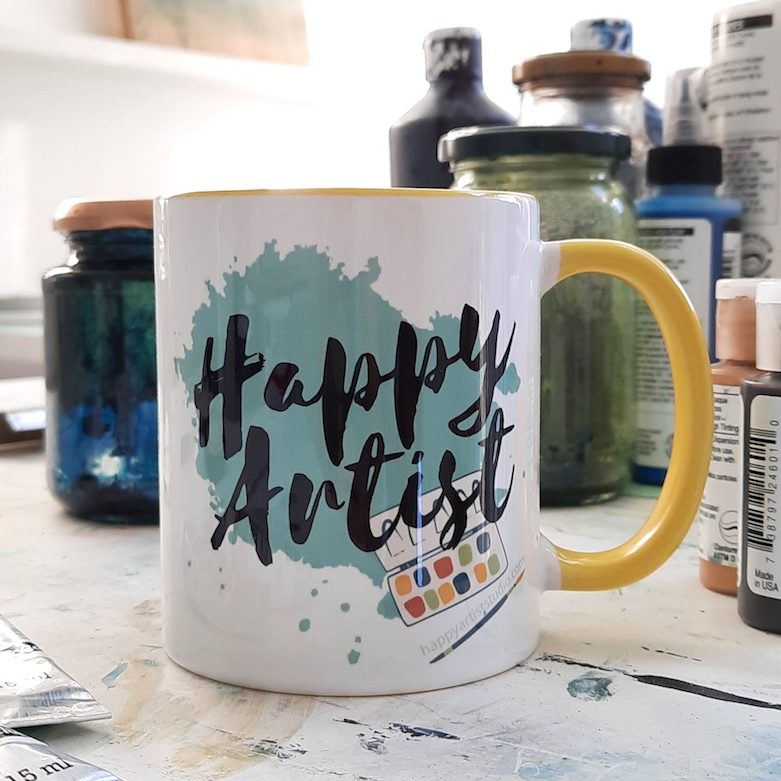This is the fifth and final post in the series, focused on helping you become ever clearer about what’s unique to you, even while being inspired by other artists.
Part 1 | Part 2 | Part 3 | Part 4
Each week we’ll look at a single aspect of painting and how you might tease out the nugget of what’s inspiring you so you can be sure you’re making your own work and not a heavily influenced hybrid or attempted copy of someone else’s.
I have no doubt there are infinite ways to do this, and in part it will just happen the more you paint, but the ways I find most helpful include a bit of left brain analysis and a breaking down into parts. The right brain can then rebuild into new things with the new ideas.
5. Play with their compositions
Composition is a huge topic, and I go into it in more detail in Abstractify, but let’s take a quick look at some examples of compositions artists use and how we can be inspired by them.
Rule of Thirds
Divide the canvas into a grid of nine sections using two horizontal and two vertical lines, and place focal points anywhere the lines cross. In this still life, Richard Diebenkorn has placed the focal point where the top left lines would cross.
Cruciform
Essentially a T or cross shape to create a stable, anchored composition. Here it is used in a still life by Shirley Trevena, and a figurative piece by Cathy Hegman. It’s fun to explore the different ways compositions can be used across subjects.
Grid
As neat or as rough and ready as you like, it creates a patchwork effect, often evocative of fields, buildings, or something more abstract.
Notice in these paintings by Archibald Dunbar McIntosh and Anne Davies how the grids aren’t uniform – there’s plenty to keep the eye entertained in the variations.
Strata
Layers or stripes – great for landscape or abstract.
This painting by Barbara Rae is a great example of strata – notice the variation not just in colours but in line widths and lengths throughout.

S or Z shape
Using a curving line that leads the eye into the ‘distance’.
In this painting Chris Gwaltney has used the S shape with the figure in a way that suggests walking a path, expressed almost abstractly. The shape starts at bottom right and leads the eye up through the painting to the suggested skyline top right.

Composition is a very flexible thing, although it can seem quite daunting when you’re just getting to grips with it.
It’s not about memorising all the types and trying to remember them while you paint, or choosing one before you begin and trying to force the painting to fit into it.
In my experience, the more you paint, the more it comes naturally anyway, and often more than one compositional style can be found in a single painting.
For me it’s very much a felt experience, although I have also studied composition and it’s seeped in over the years.
Although it can feel quite academic to break it down as I have above – and this is only a selection of possible options – I find it does help to have an understanding as a starting point.
It’s another tool for your artist’s toolbox and the more you experiment the more confident you become, just like with anything.
A suggestion to make it yours:
Artists will often use variations of the same composition over and over – it’s part of what makes their work recognisable and is a great way to explore an idea within a container.
Take a look at the work of a favourite artist and see if you can discern what their most favoured composition is.
One way to explore composition for yourself is to use a limited palette {say three colours}, and make a small series of simultaneously created paintings of the same subject using different compositions.
 I hope this little series has given you some ideas and things to try as you explore what paint can do. If you’d like to play further with other artists’ work in a way that can teach you about your own, then you might like Artist Inspired II.
I hope this little series has given you some ideas and things to try as you explore what paint can do. If you’d like to play further with other artists’ work in a way that can teach you about your own, then you might like Artist Inspired II.
Packed with visuals, videos, ideas to explore, and a look at the life and work of each artist, the course invites you to enjoy being inspired by various female artists as a means to finding your own unique voice as an artist.
You’ll find this course in a library of courses inside the Happy Artist Studio, a membership for artists ready to strengthen their art, their process, and their confidence, and share their work with the world. Membership gets you access to all the courses, plus a private community for sharing and feedback, monthly topics and Q&A videos, and The Way of the Happy Artist – a program designed to set you up for thriving as an artist. Click here to find out more!











I am continually exploring your past blog suggestions and find them wonderfully inspiring. Just finished your 5 part series on How to be inspired without copying. Perfect timing since that was my goal for this year’s art experimentations. I got a lot out of your suggestions and will immediately start trying them out…today I am starting with 36 ways to draw a tree. I work in a journal and will not do it as a grid, but do it slowly over several days over several pages (some big drawings, some small, some detailed, some sketchy, some realistic, some more abstract,… really thinking about what I like or don’t like about each technique I try and journal about the feelings I had while doing it. And I will do it all without copying others work plans and look more carefully at the many trees in nature for ideas. Yes…I can do this…I’m feeling rather excited about this project. I think it is really good way for me to start exploring my personal style. Thank you for the inspiration.
Delighted you’re finding value in the blog Lin! And love that you’re adapting the tree exercise – sounds like a lovely approach!
WOW! Just discovered you…fantastic. now all I need to do is go to my studio and START!!
Yay! Go for it!